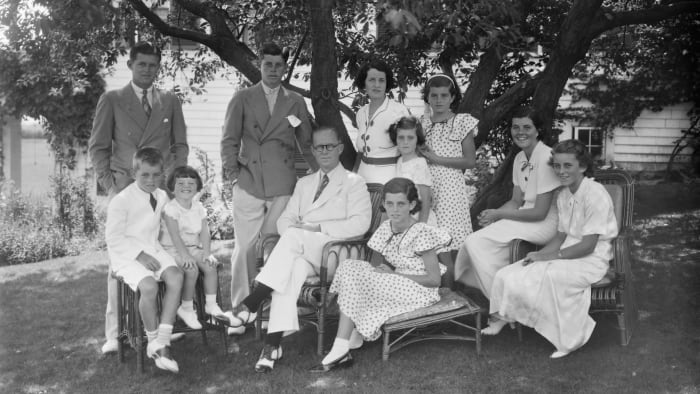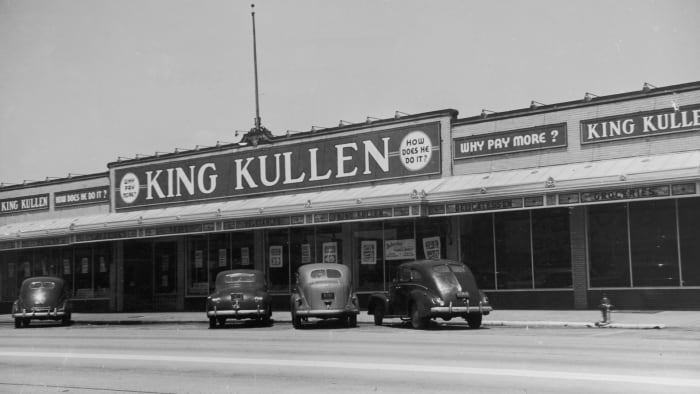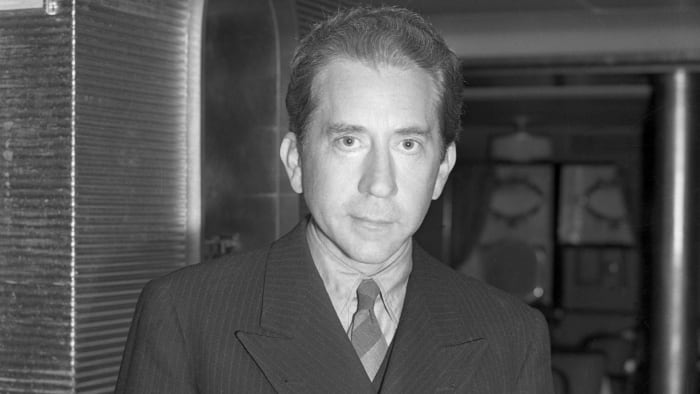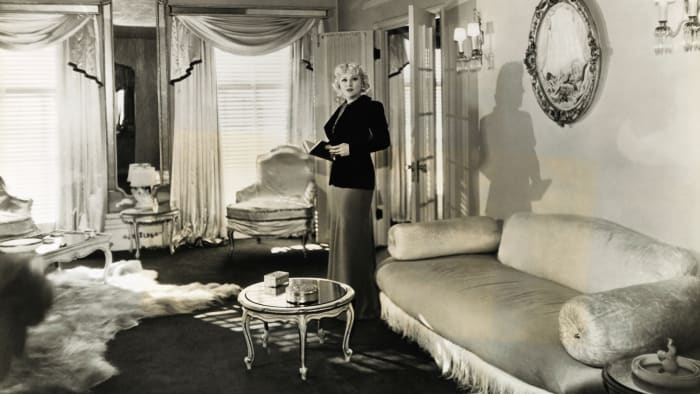When the Great Depression hit its lowest ebb in 1933, the unemployment rate exceeded 20 percent and America’s gross domestic product had plummeted by 30 percent. Not everyone, however, lost money during the worst economic downturn in American history.
Business titans such as William Boeing and Walter Chrysler actually grew their fortunes during the Great Depression. As the aviation industry took flight in the 1930s with the advent of regular passenger service, Boeing built a vertically integrated empire that manufactured aircraft and operated airlines until the federal government forced its breakup.
Carmaker Chrysler responded to the financial freefall by cutting costs, boosting efficiency and improving passenger comfort in his company’s vehicles. While sales of expensive cars plunged, those of Chrysler’s cheaper Plymouth brand soared. According to Automotive News, Chrysler’s market share rose from 9 percent in 1929 to 24 percent in 1933 as it surpassed Ford as America’s second largest car company.
Thanks to shrewd investments, fortuitous timing and entrepreneurial vision, the following Americans also profited during the Great Depression.
WATCH: The 3-night event, The Titans That Built America, premiering Memorial Day at 9/8c. Watch a preview now.
Joseph Kennedy, Sr.: Stocks, Movies and Spirits

A portrait of the Kennedy family, pictured in Hyannis, Massachusetts, c. 1930s. Seated from left, Robert Kennedy, Edward Kennedy, Joseph P Kennedy Sr, Eunice Kennedy, Rosemary Kennedy, and Kathleen Kennedy; standing from left, Joseph P Kennedy Jr, John F Kennedy, Rose Kennedy, Jean Kennedy, and Patricia Kennedy.
Bachrach/Getty Images
Joseph Kennedy, Sr. made millions in the unregulated stock market of the 1920s, in part due to insider trading and market manipulation. The Kennedy family patriarch then used his Wall Street earnings to become a movie mogul. After purchasing a failing Hollywood studio in 1926, he consolidated movie companies that churned out low-budget movies, made them more efficient and sold them for big profits. By the time he exited Hollywood in 1931, Kennedy had earned $5 million in the film industry, according to the National Park Service.
While most investors watched their fortunes evaporate during the 1929 stock market crash, Kennedy emerged from it wealthier than ever. Believing Wall Street to be overvalued, he sold most of his stock holdings before the crash and made even more money by selling short, betting on stock prices to fall.
Kennedy biographer David Nasaw said he found no truth to the rumors that the 35th president’s father was a bootlegger during Prohibition. However, the lucrative contract Kennedy signed in Prohibition’s waning days to be the sole American importer of Scotch whiskey and gin produced by British distillers such as Dewar’s and Gordon’s contributed to the growth of Kennedy’s wealth from $4 million in 1929 to $180 million by 1935.
READ MORE: How Joseph Kennedy Made His Fortune (Hint: It Wasn’t Bootlegging)
J. Paul Getty: Oil Stocks and Real Estate
Oil tycoon J. Paul Getty abided by a simple business formula: “Buy when everyone else is selling, and hold on until everyone else is buying.” Having already made his first million dollars in the oil industry more than a decade earlier, Getty skipped a celebration of his parents’ golden wedding anniversary during the 1929 stock market crash to commiserate with Wall Street brokers, investors and speculators.
With companies desperate for cash, Getty took what he had learned and acquired undervalued oil stocks and real estate. “It is the opportunity of a lifetime to get oil companies for practically nothing,” he wrote. Aiming to build an oil empire to rival that of John D. Rockefeller, Getty purchased Pacific Western Oil Company and shares of Tide Water Associated Oil Company, the country’s ninth-largest oil company. Five years after buying Tide Water shares for $2.12, they were worth more than $20.
READ MORE: How Apples Became a Weapon Against the Great Depression
Mae West: Movie Stardom
As demand for inexpensive entertainment and interest in new talking pictures kept the movie business afloat during the Great Depression, Mae West emerged as one of the era’s biggest box-office stars. Before jumping to the silver screen in 1932 at the age of 39, West starred in vaudeville and burlesque shows and Broadway plays that she wrote.
Paramount Studios, which was teetering on the edge of bankruptcy, signed West to star in the 1933 film She Done Him Wrong, an adaptation of her hit Broadway play Diamond Lil. The movie’s success changed Paramount’s fortunes—as well as West’s. By the mid-1930s, she earned $300,000 per role and $100,000 per screenplay, making her Hollywood’s highest-paid entertainer and the country’s highest-paid woman. West’s strong female leads that combined wit, grit and sexuality connected with her audiences, but her star faded when her performances proved too risqué for Hollywood censors in the latter 1930s.
READ MORE: 10 Ways Americans Had Fun During the Great Depression
Charles Clinton Spaulding: Insurance
During the Great Depression, Charles Clinton Spaulding presided over America’s largest Black-owned business: the North Carolina Mutual Life Insurance Company. Founded in 1898, the company struggled to survive before hiring Spaulding. Utilizing his sales and marketing expertise, the company expanded into fire insurance, banking and mortgage lines. The company, which operated out of rented desk space in the corner of a doctor’s office when Spaulding started, grew into a six-story office building that anchored “Black Wall Street” in Durham, North Carolina.
As African Americans suffered the highest unemployment rates during the Great Depression, Spaulding was widely seen as the country’s leading Black businessman. He oversaw his company’s expansion into Pennsylvania while advising President Franklin D. Roosevelt on the composition of his “Black Cabinet.” According to The Complete Encyclopedia of African American History, “Spaulding was the living black symbol of the New South.”
READ MORE: Last Hired, First Fired: How the Great Depression Affected African Americans
Michael Cullen: Groceries

Exterior view of a King Kullen grocery store, in Rockville Center, Long Island, New York, c. 1940s.
R. Gates/Getty Images
Prior to the 1930s, consumers shopped for groceries in corner stores with limited inventories of items that clerks retrieved from shelves. When the Great Depression struck, Kroger Grocery employee Michael Cullen proposed that the company launch self-service stores with large selections, discount prices and parking lots to cater to the growing number of automobiles. “I would convince the public that I would be able to save them from $1 to $3 on their food bills,” he wrote. “I would be the ‘miracle man’ of the grocery business.”
When Kroger ignored his business plan, Cullen in 1930 opened what the Food Industry Association considers America’s first supermarket in the New York City borough of Queens. Advertising itself as “The World’s Greatest Price Wrecker,” King Kullen appealed to cost-conscious shoppers with its small markups and large inventory.
In 1933, Cullen purchased a competing Queens grocery store from Fred Trump, father of President Donald Trump, who used the money to bolster his real estate investments. By the time of Cullen’s death in 1936, King Kullen had 15 locations and a loyal customer base. Publix Super Markets also sprouted during the Great Depression when George Jenkins opened his first store in Winter Haven, Florida, in 1930. According to Supermarket News, the number of American supermarkets grew from 300 in 1932 to 4,500 by 1939.
READ MORE: Underpaid, But Employed: How the Great Depression Affected Working Women
Howard Hughes: Oil, Aviation, Movies
Howard Hughes was a millionaire by the age of 18 after inheriting a fortune from his father, who had developed a drill bit that revolutionized the oil industry. Before he became known as an aviator, Hughes grew his wealth as a Hollywood film producer. His 1927 film Ten Arabian Knights earned Lewis Milestone an Oscar as best comedy director at the inaugural Academy Awards. He spent upward of $4 million to produce 1930’s Hell’s Angels, at the time the most expensive movie ever made, and followed that with box-office hits The Front Page and Scarface.
In the midst of the Great Depression, he turned his attention to aviation and in 1932 formed the Hughes Aircraft Company, which became one of the world’s most profitable aircraft manufacturers. His company converted military aircraft into air racers, and Hughes garnered headlines in the 1930s by setting new speed records. In 1936, he broke the transcontinental speed record by flying from Los Angeles to Newark, New Jersey, in under 10 hours, and two years later, he joined a crew that flew around the world in a record 91 hours.



